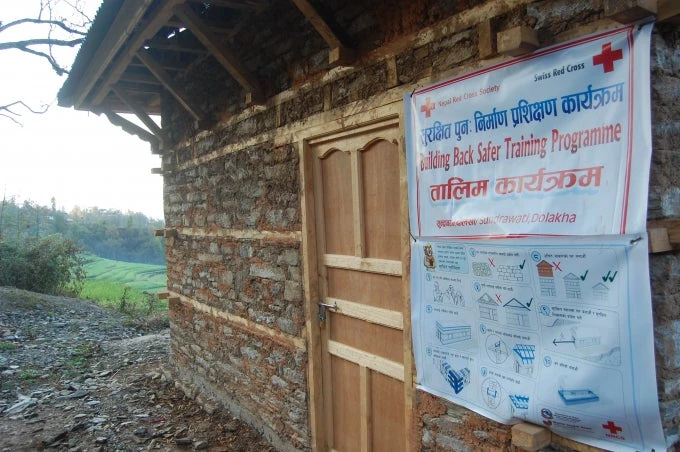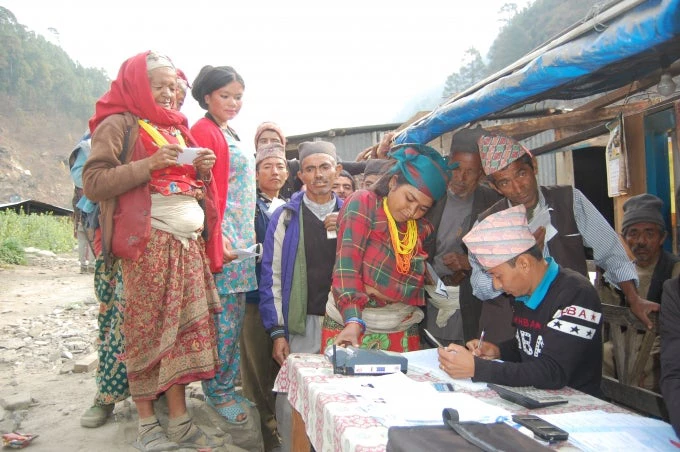Nepal Earthquakes: One Year Anniversary
One year ago today, the first in a series of massive earthquakes rocked Nepal. Nearly 9 thousand people lost their lives in the disaster. Over 20 thousand people were injured – many critically. As many as 450 aftershocks have shook the country since.
In all, the earthquakes upended the lives of 8 million Nepalis – nearly a third of the population. The devastation was wide-spread: the Government of Nepal led an extensive exercise to assess the damages and losses, which a Post Disaster Needs Assessment estimated in the order of US$7.1 billion. As it turned out, the poorest and the most vulnerable communities were hit the hardest. The government estimates that the disaster pushed nearly 1 million Nepalis back into poverty.
From private homes to public infrastructure; and farms, businesses and historical monuments – hardly anything was spared in the trail of destruction. But from the government’s own assessment, rural housing stood out as one area of greatest need, in excess of US$1.2 billion. Early on, the government estimated that over half a million homes were destroyed.

In June last year, exactly two months after the first earthquake, 56 governments and international organizations came together in Kathmandu and pledged US$4.1 billion in reconstruction assistance. The World Bank Group was among them. At the International Conference on Nepal’s Reconstruction, the Bank Group offered a financial package of up to US$500 million.
Soon after the earthquakes, the Government of Nepal promised NRs. 200,000 (approximately US$1,900) in assistance to each family rendered homeless by the calamity. The Emergency Housing Reconstruction Program, supported by the World Bank and the governments of Japan, the United States, Switzerland and Canada, is designed to make good on that promise.
The first principle is equity. This means that the program is meticulous in identifying legitimate beneficiaries and defining a uniform package of assistance. This will ensure that the assistance provided is even and no one is left out. Obviously, some considerations will be made: for example female-headed households and households whose bread-winner was killed in the earthquake will be eligible for uniform top-ups.
The second principle is ownership. This means that the beneficiaries themselves are primarily responsible to reconstruct their homes. Homes will be reconstructed in their original locations unless resettlement is unavoidable.
The third principle is safer construction. This means that beneficiaries will be supported to build back better so that their houses are more resistant to future earthquakes. The subsidy will be paid out in 3 installments. Each payment will be subject to certification by competent technical personnel in order to ensure that the grants are used to build houses according to safer standards, using local materials and enhanced traditional construction techniques.

Unfortunately, the earthquakes were not the only crisis to hit Nepal in 2015. The economic and social consequences of the four-month-long border crisis starting in September 2015 have been widely reported. But from a recovery standpoint, the acute shortage of fuel and construction materials, along with the government’s preoccupation with managing another set of public hardships, presented logistical difficulties and delays.
To its credit, Nepal continued to plan for reconstruction during this adversity. Meanwhile, UN organizations, international relief organizations, NGOs, charities and even ordinary people stepped up to support the extended relief effort – first through the wet monsoon and then the cold winter season. The patience demonstrated by the Nepali people was equally remarkable.
Last December, Nepal established a National Reconstruction Authority to coordinate the recovery effort between various government and non-government organizations, as well as Nepal’s international development partners. The Reconstruction Authority is in its early days – staffing itself; defining legal and administrative procedures; and expanding its presence on the ground to set up the systems to carry out and monitor reconstruction activities.
Since early 2016, the government has deployed nearly 1,600 engineers to carry out eligibility surveys in rural areas hardest hit by the earthquakes. These teams are accompanied by social mobilizers to help understand and address grievances. As of April 1, 550,000 houses have been technically assessed for earthquake damage. The government expects to complete the damage survey by the end of April.
Last month, the Reconstruction Authority put its systems to test during a pilot roll-out in one community in Singati Bazaar in Dolakha district, the epicenter of the second major earthquake. Bank accounts were set up for beneficiaries who never had one before. Design options and cost estimates for safer construction standards were widely promoted. The first 600 households that signed Participation Agreements in Singati have since received the first installment of 50,000 Rupees each.

Nepal’s reconstruction needs extend well beyond rural housing. Many public services were disrupted by the earthquakes and worsened by the subsequent border crisis. These services require urgent restoration. Of the 23 projects that the World Bank currently supports in Nepal, 12 have reallocated funds or extended their durations to assist in the recovery. These include the repair of damaged roads, irrigation and drinking water schemes; expansion of vocational training in areas related to post-earthquake recovery; as well as healthcare, nutrition and livelihood support in the poorest communities.
A post-disaster recovery program of Nepal’s scale requires a commitment of financial and human resources, as well as focused efforts to prioritize and sequence reconstruction over several years. The Government of Nepal, with support from the Global Facility for Disaster Reduction and Recovery, is attempting to articulate just that in the Post Disaster Recovery Framework (PDRF) currently under preparation. Going forward, the PDRF will be a common framework for all partners and stakeholders and will guide the planning, financing, implementation and monitoring of recovery and reconstruction.


Join the Conversation